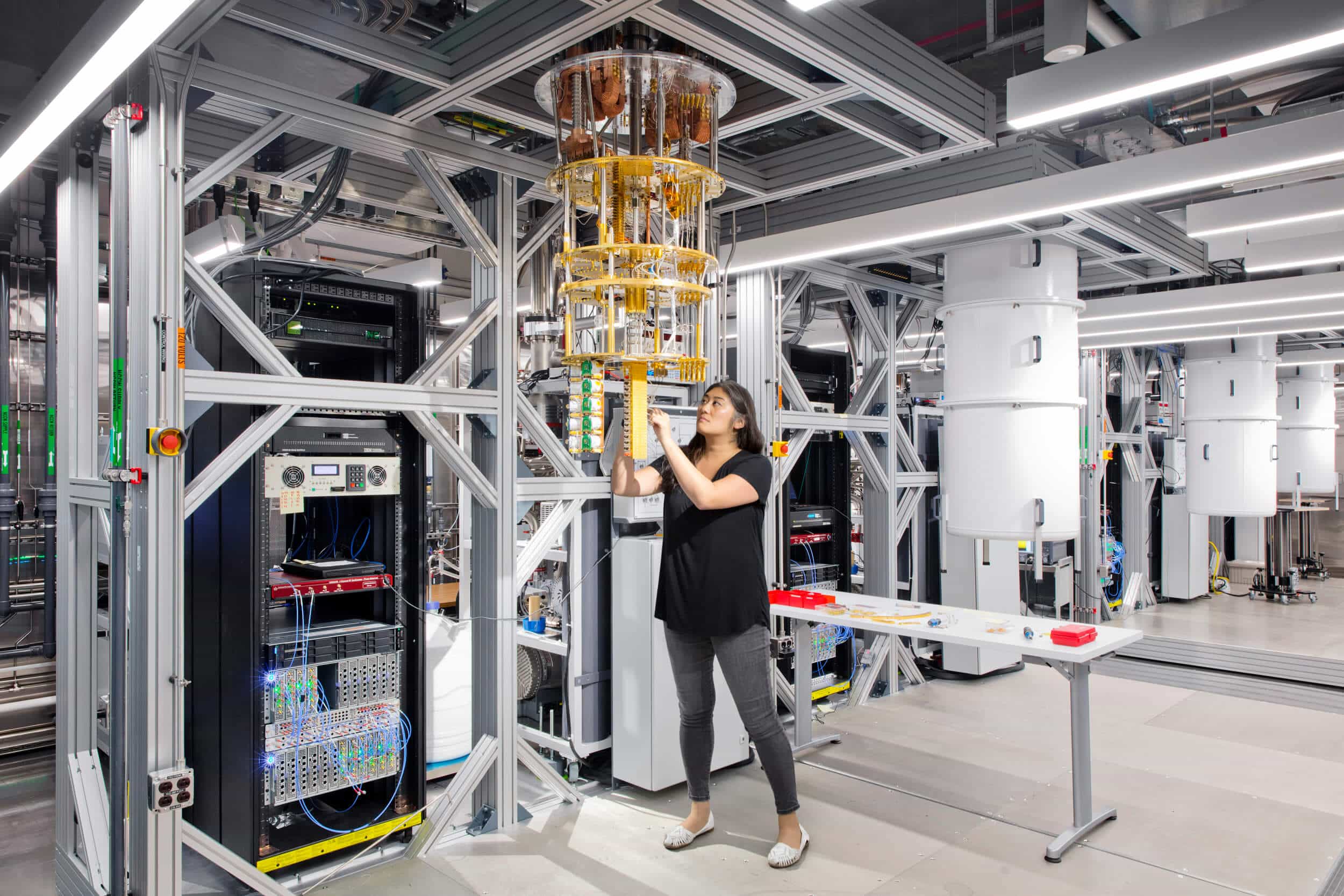As part of its roadmap for the quantum era, the computing giant will introduce a quantum processor with 433 qubits this year, a processor with over a thousand qubits next year, and a processor with more than 2025 qubits and parallel work capacity in 4,000 - to take quantum computing out of the laboratory and into the practical world

The computing giant IBM announced today the expansion of its road map for achieving practical quantum computing on a large scale - in the scope of up to hundreds of thousands of qubits. The goal of the move is to make quantum computing systems fast and stable enough to make quantum computing feasible and practical.
IBM's road map towards practical quantum computing relies on the development of strong scalable quantum hardware, advanced quantum software for the orchestrated operation of several quantum systems at the same time, as well as strengthening the global quantum computing ecosystem and increasing collaborations with companies, organizations and communities to prepare them for the quantum era.
IBM's roadmap was launched in 2020 and since then the company has met each of the goals it set for itself. A prominent target was the IBM Eagle - a quantum computer that includes 127 qubits with quantum circuits that cannot be reliably simulated using classical computing achieved in 2021.
Eagle's architecture laid the foundation for quantum processors with more qubits and more stable and reliable systems. Later this year, IBM expects to unveil the IBM Osprey processor that will contain 433 qubits, and next year the IBM Condor processor - the world's first universal quantum processor with over a thousand qubits.
In addition, IBM has already demonstrated a 120-fold speedup in quantum runtimes through the software platform Qiskit Runtime - the computing service in containers and IBM's programming model for quantum computing. Next year, the company is expected to build a frictionless development experience with Qiskit Runtime directly in the cloud, with the aim of making the service available to developers in a simple and accessible way.
In the future, IBM intends to develop connectivity between quantum processors that will allow clusters of quantum processors to be connected together into a larger quantum system. Also, the company aims to enable operations to be performed across several quantum processors at the same time, in order to build capacity for developing techniques necessary for practical quantum systems. The various moves will be leveraged towards IBM's goal for 2025: a 4,000+ qubit processor built with multiple clusters of processors in a modular structure.
Along with hardware breakthroughs, IBM's roadmap targets software milestones to reduce errors and minimize noise that interfere with quantum computations, paving the way toward automatically error-correcting quantum systems.
Along with the roadmap for the development of the hardware, software and infrastructure, IBM is also committed to extending the leadership in quantum security to protect data from future threats. Experts estimate that the encryption prevalent today will not be able to withstand attempts at decryption based on quantum computing and even warn against the phenomenon of stealing encrypted data today, so that it can be decrypted in the future with the expected progress in quantum computing.
According to IBM experts, all data – past, present and future – that is not protected by quantum security may be at risk and if organizations do not soon adopt advanced encryption methods resistant to quantum decryption, their data will remain at risk.
IBM has developed quantum data security programs that could provide practical solutions to this problem. Currently, IBM is working closely with its partners in academia and industry, as well as the US National Institute of Standards and Technology (NIST), to bring these programs to the forefront of the information security market.
“In just two years, our team has made incredible progress on our quantum roadmap. Fulfilling our vision allows us to clearly see the quantum future and what it will take to bring it to the practical level," said Dario Gil, Senior Vice President and Director of IBM's Global Research Division. "With the Qiskit Runtime platform and progress on the hardware, software and theory goals outlined in our roadmap, we intend to usher in an era of quantum computing-based supercomputers that will open up large and powerful computational spaces for our developer community, partners and customers."
More of the topic in Hayadan:
- IBM publishes a roadmap for quantum computing: a computer with more than a thousand qubits by 2023
- CEO Ramon Spies: Our processors are the heart of Levini Edlis-Samson
- IBM and the Fraunhofer Institute unveiled Europe's most powerful quantum computer
- Atoms with long memory for quantum computers
- An initial plan to establish a lunar outpost and send humans to Mars was leaked

2 תגובות
Ah, I got the years wrong and the prediction was not disproved. I apologize (and ask not to publish both messages)
It's a bit strange to read a forecast based on expected "leaps", but I wish. Meanwhile, it seems that the forecast for next year has dropped from "more than a thousand" qubits to 433 (see https://contextly.com/redirect/?id=bDUz0AVkfh:122769:9138:18:RVM=::previous:627e16a3b4b315-51354591), so a little skepticism won't hurt.